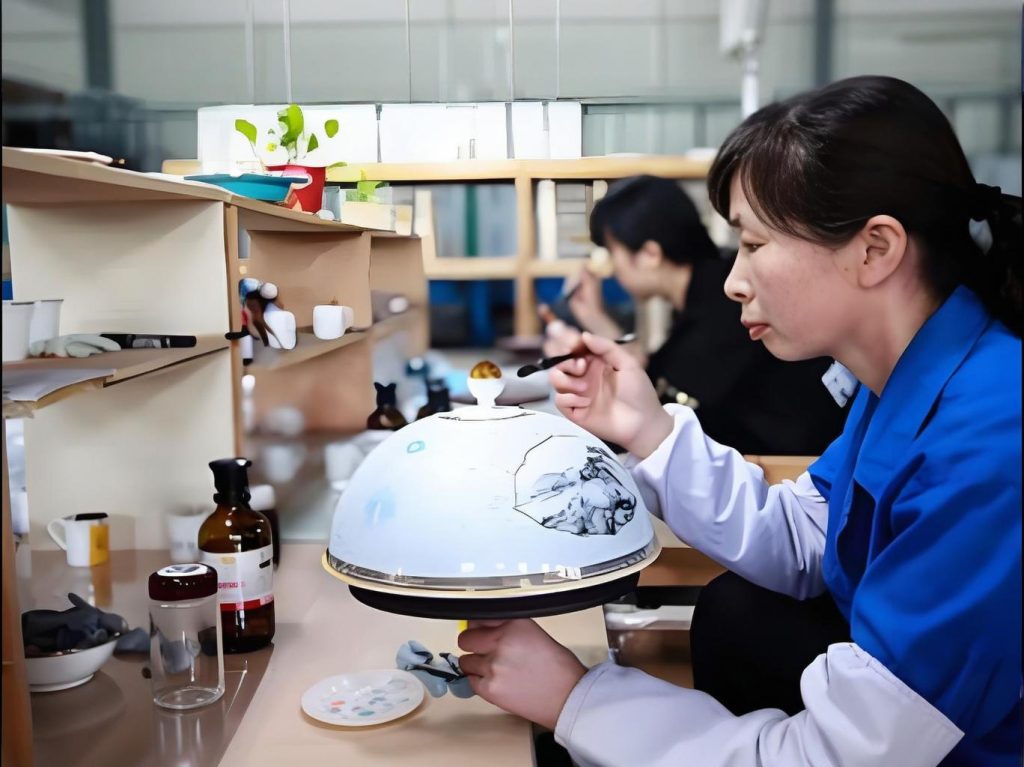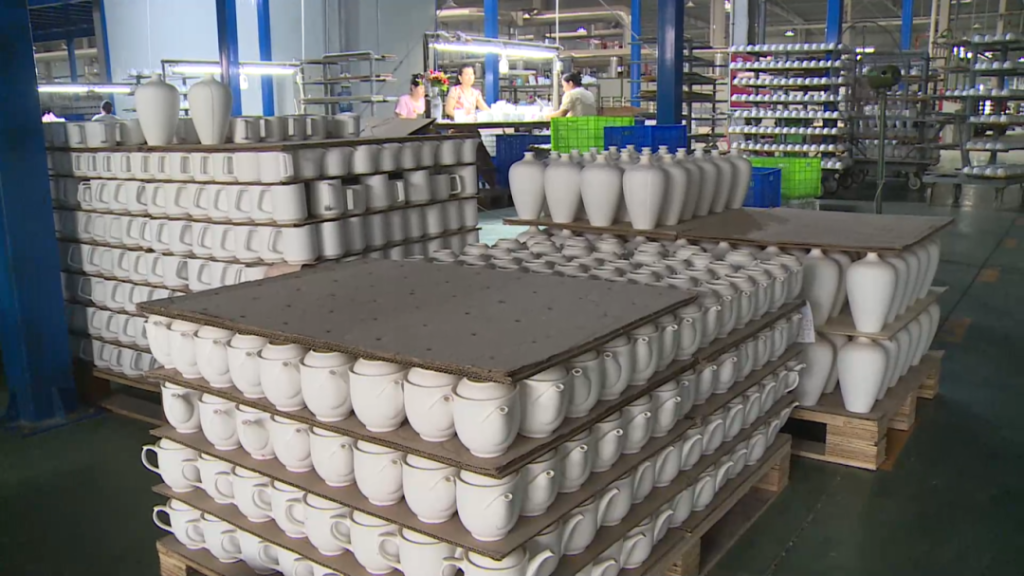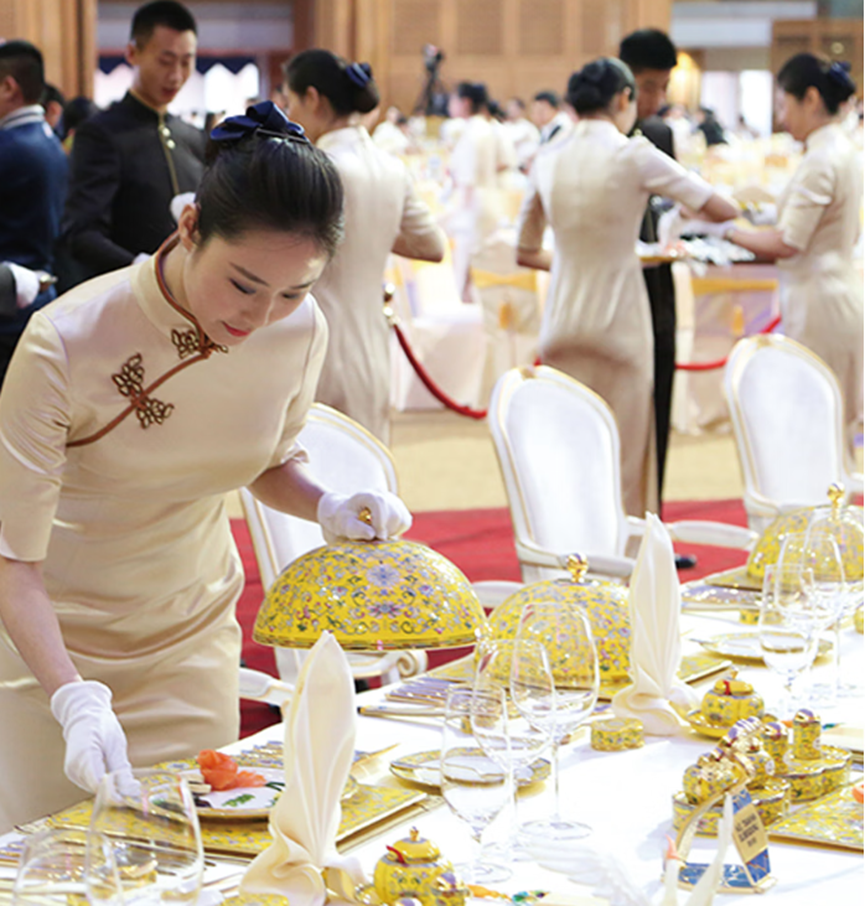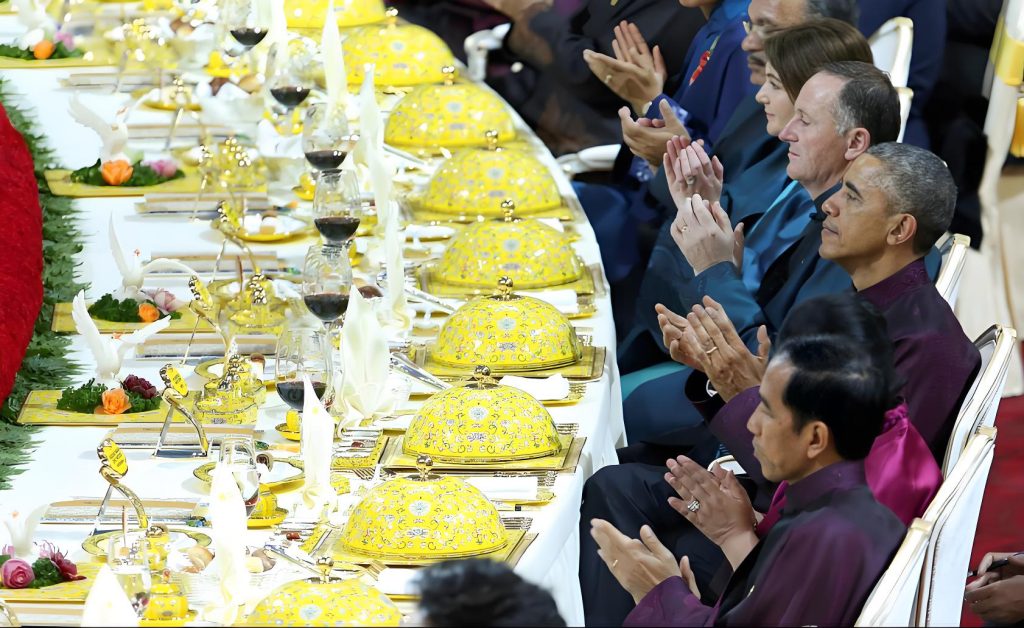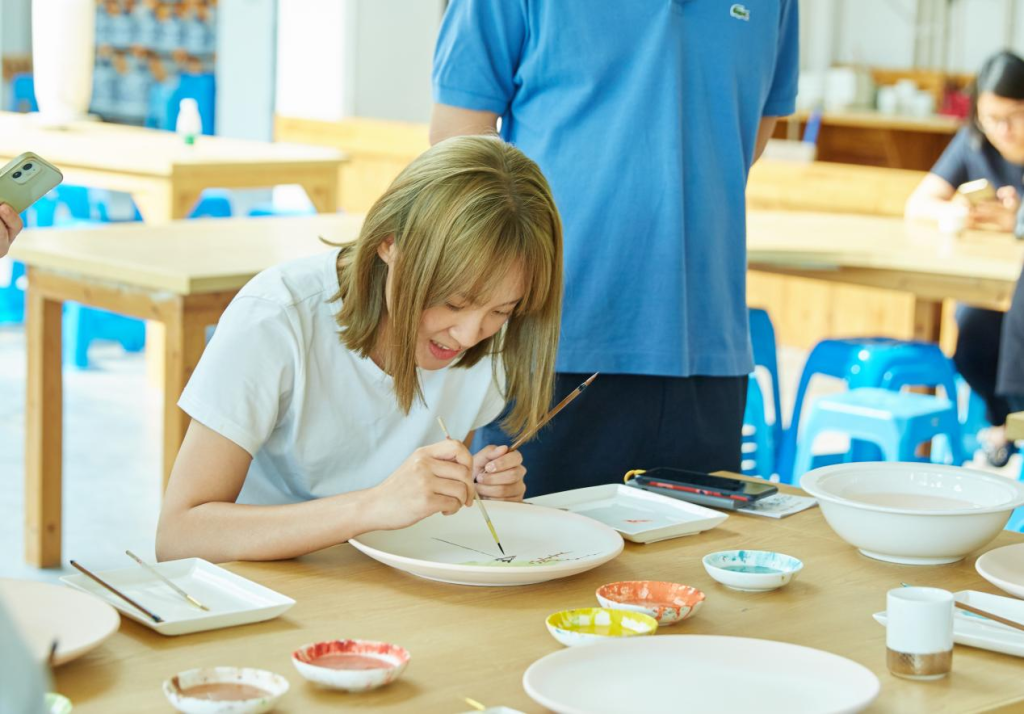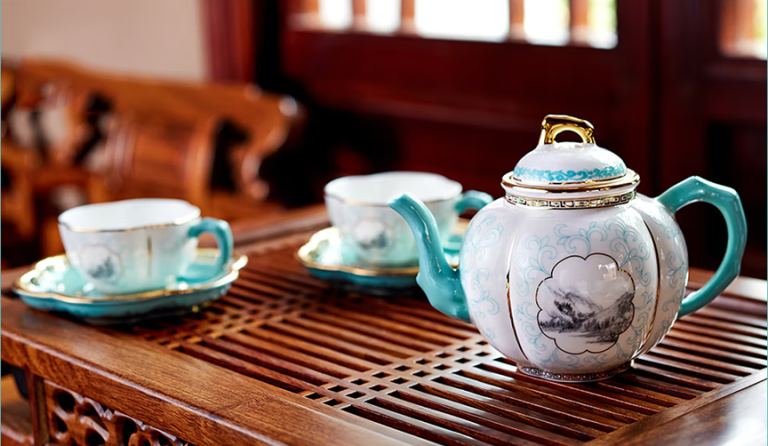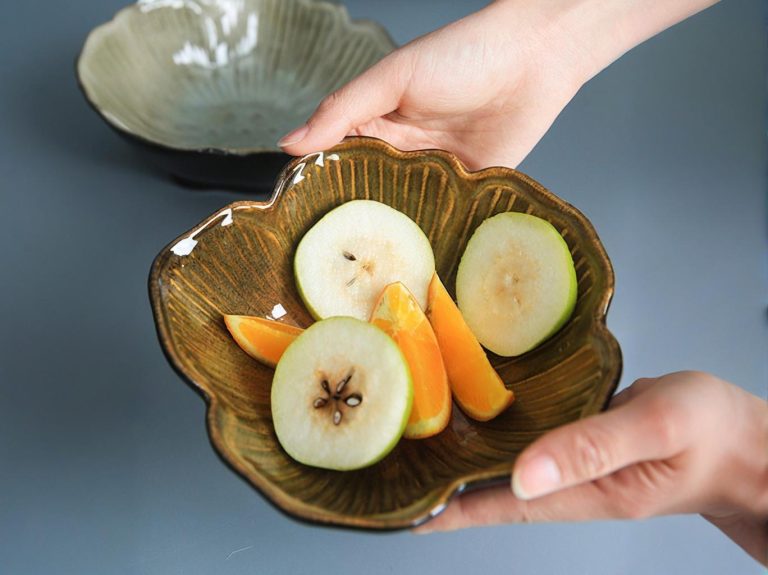Research on the Design of Ceramic Tableware Based on Chinese Table Etiquette
Theoretical Basis of Dining Etiquette Culture
Overview of Traditional Chinese Dining Etiquette
During the Zhou Dynasty, a relatively complete system of dining etiquette was formed, which was praised and respected by Confucius. Dining etiquette became an important testament to the cultural capital, state of etiquette, and ancient civilization throughout the dynasties. In traditional Han banquets, a corresponding procedure was formed: the host writes an invitation card and sends it to the guests before the banquet, allowing them to attend the grand feast. Before the guests arrive, the host must rise to greet them at the door. When the guests arrive at the banquet venue at the specified time and place, both the host and guests exchange warm greetings.
Before the banquet begins, the host leads the guests to sit in the dining room and enjoy delicious snacks and tea. When all the guests have arrived, they are led to a table in the dining room, where the distinguished guests are seated in the front row of honor seats, starting from the upper left corner (with the left as the superior position).
The order of dining also has certain rules: first, respect the elders and distinguished guests, then respect the host. After the banquet, the host leads the guests to sit in the living room and serves them tea as a farewell. In most regions of China, this traditional banquet etiquette model has been completely preserved and is currently practiced in Beijing, Henan, Hong Kong, and Taiwan.
As an old Chinese saying goes, “People consider food as their primary need.” Guan Zhong of the Spring and Autumn Period (770-476 BC) said, “Only when the people have sufficient food will they understand etiquette; only when they have ample clothing and food will they know honor and shame.” After enjoying material security in terms of clothing, food, housing, and transportation, the spiritual life of etiquette and righteousness will be enriched and developed. Through diet, one can see the etiquette traditions of a nation, which is an aspect of culture. Without rules, there is no place to stand. From the initial linguistic restrictions to today’s dining etiquette, although not mandatory or legal, dining etiquette has gradually entered our lives as a life skill and permeates our daily meals.
Jingdezhen Regional Food Culture Performance
As the porcelain capital, Jingdezhen has a rich regional food culture, and its dining etiquette is in harmony with that of the whole country. Round dining tables are favored by the majority, and large hotels in Jingdezhen City almost all use round tables for banquet dining.
In large folk banquets, guests are seated at the host’s invitation, and the host must take good care of the guests. A space must be reserved for serving dishes. There are certain rules for seating positions, such as “main host,” “secondary host,” “third host,” “main guest,” “secondary guest,” and “third guest.” When preparing to dine, the guests or elders are invited to start first, and it is best not to make noise while eating. Traditionally, Chinese people use a square table with eight seats, and the seat facing the door is the head seat, with the two sides being secondary seats. When entertaining guests, the elderly, main guests, or people of higher status sit in the head seat, while the male and female hosts or accompanying guests sit in the lower seats, and other guests sit in the secondary seats on either side in order.
The Influence of Table Etiquette Culture on Teenagers
The Value of Table Etiquette Culture in Adolescent Education
Adolescents refer to children aged 10-16, corresponding to the junior high and high school education stages. This stage is the golden period for cultivating etiquette education. Table etiquette culture is the most direct expression of an individual’s etiquette quality in social interactions. However, it is often not emphasized among teenagers. While it may not be necessary to overly focus on table etiquette during casual gatherings, it becomes extremely important during banquets or more formal meals.
The Value of Table Etiquette in Adolescent Education
Adolescents generally refer to those from junior high school (13-15 years old) to high school graduation (from 16 years old to adulthood). The stage when adolescents receive etiquette education is the most critical and important period in their lives. Table etiquette is one of the most important aspects of etiquette education.
For individuals, displaying good table etiquette during formal gatherings or banquets reflects one’s attitude towards dealing with others, showing respect for elders and courtesy towards guests. Good table etiquette habits can promote personal development; during meals, good table etiquette habits can make elders feel respected and loved by the younger generation and make guests feel the host’s warm hospitality. For society, personal table etiquette habits can reflect the upbringing of one’s family and promote social interactions.
Application of Dining Etiquette in Ceramic Tableware Design
The Sense of Ritual in Ceramic Tableware — Based on Yunnan Mengzi Cross-Bridge Rice Noodles
The sense of ritual (the act of ritualizing daily behaviors to give them meaning) in this design concept is inspired by the eating process of Yunnan Mengzi cross-bridge rice noodles. Before preparing to eat the raw ingredients (meat, fish, etc.), they are gently stirred into the soup to cook, then fresh vegetables and spices are added and cooked, and finally, bean crisps are added. Bean crisps are made from cooked noodles and peas, and their taste is unique to the cross-bridge rice noodle soup, with a distinctive flavor even without MSG. After adjusting the seasoning to personal taste (salty, mild, spicy, etc.), the rice noodles are added and slowly eaten, accompanied by some side dishes. The rice noodles also reflect the emotional friendship between couples and relatives, while the long, resilient rice noodles symbolize enduring friendships among relatives and friends.
In the hearts of Chinese people, there is no God, only ancestors and family ties. What we are eating here is “food” used to express the emotions behind cultural rituals. The focus of this sense of ritual is to enable diners to participate in the preparation process of cross-bridge rice noodles. Such a sense of ritual is welcomed by every user, forming a unique dining etiquette in this manner.
The ceramic tableware used for eating rice noodles mainly consists of a large soup noodle bowl, accompanied by 6-7 small ceramic plates to hold the ingredients. During the meal, diners pour the ingredients into the noodle bowl in order. This simple ritual brings order to the meal and subtly awakens people’s awareness of dining etiquette.
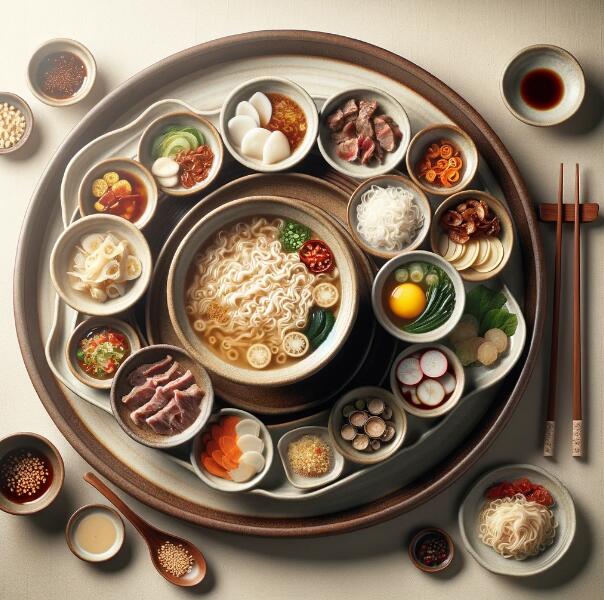
Small ceramic dish
Combining Cases to Look at the Current Design of “Etiquette” Ceramic Tableware
Among Jingdezhen’s ceramic tableware, there are relatively few complete sets of ceramic tableware designed for table etiquette. Most of the ceramic tableware displayed in popular markets such as Happy Sky, Tao Xichuan, and Sanbao Village in Jingdezhen are the most common ceramic sets. Therefore, the editor found some ceramic tableware related to etiquette from books and past graduates’ works, which provided some help for the research on the design of ceramic tableware for table etiquette.
This set of household ceramic tableware bears the inscription “Words, like food, are internal and hidden.” This design focuses on the etiquette of speech, with the matching of the lidded bowl being a key element of the design. The lidded bowl can retain the temperature of the food and corresponds to the meaning of “words hidden and revealed.” A set of ceramic tableware themed on the Silk Road is engraved with Silk Road characters and patterns.
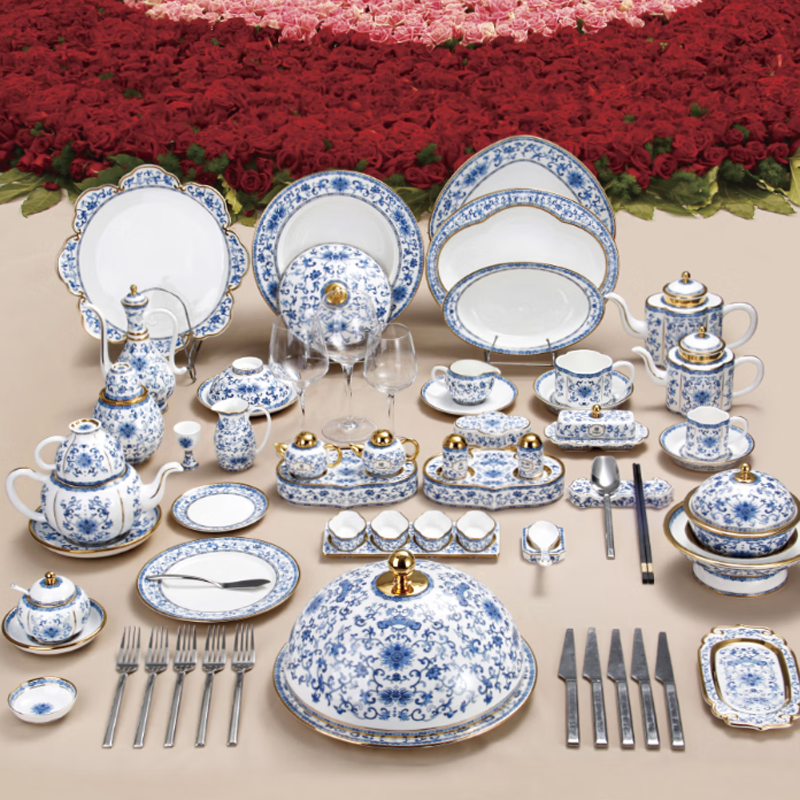
Household ceramic tableware set
As shown in the picture, this is a ceramic cultural creation design of Peking Opera facial makeup. The concept is to combine tradition and modernity, integrating Peking Opera culture with tableware. This design method can also be applied to the design of ceramic tableware related to dining etiquette.
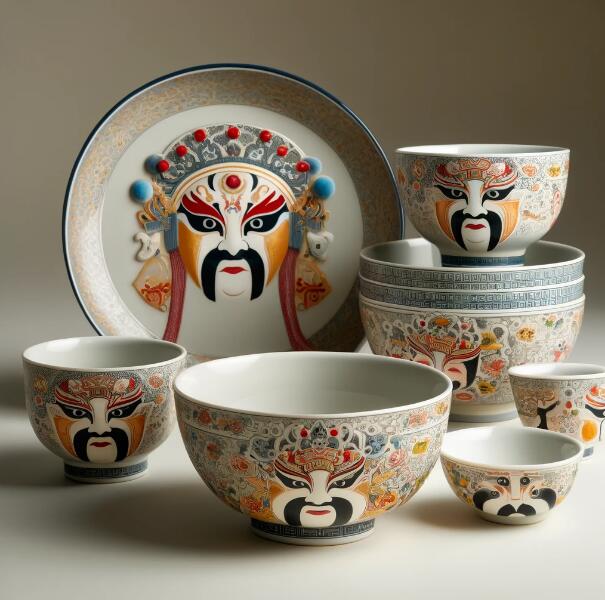
Peking Opera mask ceramic cultural and creative design
As shown in the picture, a set of ceramic spliced design in the form of lotus flowers gives a fresh and elegant feeling. The splicing method of ceramics is also a good design approach for ceramic tableware used in dining etiquette.
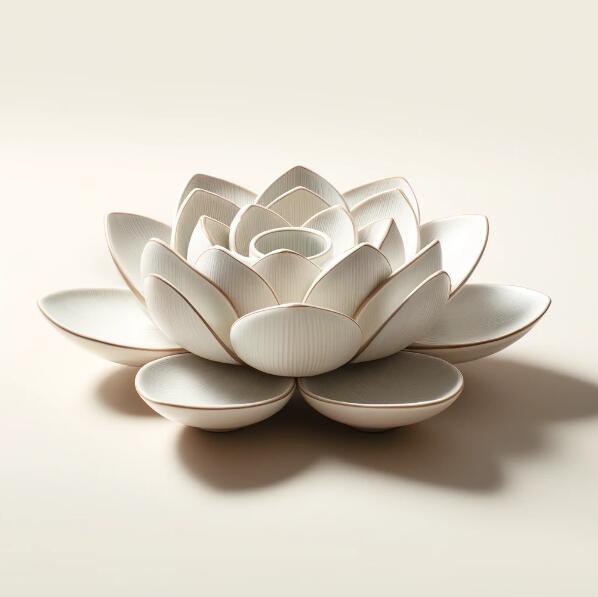
Ceramic splicing set
“Innovative Design Method for Ceramic Tableware Highlighting Table Manners
This exploration aims to highlight the characteristics of table manners through ceramic tableware design, intending to awaken table manners awareness among teenagers and young people. The main approach is to be culturally ritualistic, allowing participants to naturally accept it rather than imposing it in a mandatory or restrictive manner. Thus, the editor saw an innovative design method from the dining style of Yunnan Mengzi “Crossing the Bridge Noodles,” where each set of tableware comes with its own covered bowl. The covered bowl is placed on several main dishes (such as a few hot meat dishes), which can maintain the taste of the dishes and form a unique dining style. Once all the food is served, the participants at the banquet collectively uncover the bowls. This method is more acceptable and, when combined with cultural and creative elements like patchwork and thematic designs, can be even more appealing. Some suggest that simply using ceramic decorations with table manners motifs or patchwork can also awaken awareness without covering the food with bowls. This is reasonable but may be less effective and easily overlooked. The purpose of the editor’s exploration is to engage young and teenage diners, using text or motifs to make them more aware, ultimately achieving the goal of awakening their consciousness. This design thinking is intended for formal banquets and family feasts, which are relatively solemn events, and not for casual gatherings.
Conclusion
In daily social interactions with relatives and friends, the etiquette education of teenagers and young people is not yet perfect. Sometimes, inappropriate behavior at formal or family banquets can create awkward atmospheres. If parents or teenagers attending the banquet are made aware of the need to pay attention to and regulate their manners beforehand, it will facilitate the smooth progress and conclusion of the banquet. Unintentional actions can sometimes embarrass the other party, while polite behavior leaves a good impression on both sides. The editor uses ceramic tableware to awaken table manners awareness among teenagers and young people, providing theoretical and methodological assistance to designers interested in related topics.”
If you have any questions or need to custom dinnerware service, please contact our Email:info@gcporcelain.com for the most thoughtful support!


